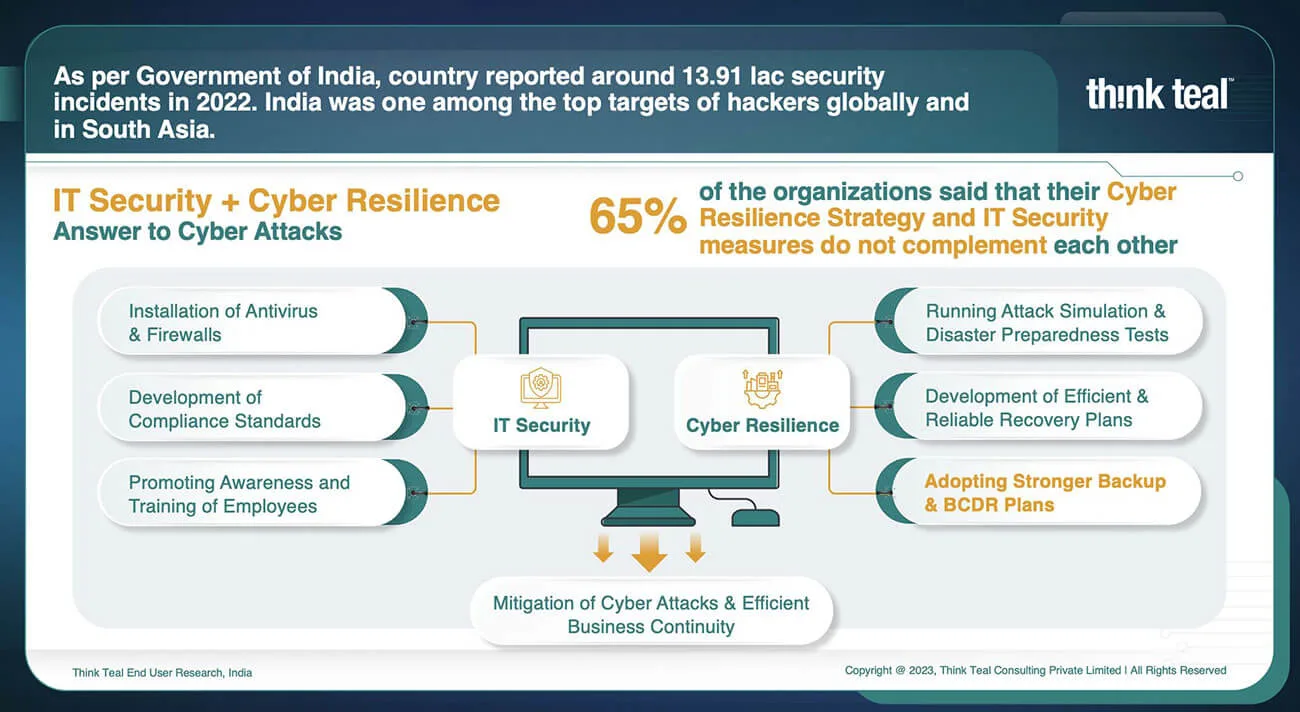Resilience Https think Cyber Contact Cyber Attacks
Today employees within an organization have greater access to business data and other information assets that can boost their productivity and facilitate smooth business operations.
In this process of making access to information easier, enterprises tend to side-line the importance of having a data protection strategy where the IT security measures align with the backup, business continuity and disaster recovery strategy of the organization.
As per Government of India, country reported around 13.91 lac security incidents in 2022. India was one among the top targets of hackers globally and in South Asia.
According to latest findings, the cyber-attacks on government agencies and in the healthcare, sector grew several folds in 2022.
In India, most of the organizations do not have a process to synchronize their IT security capabilities with their BCDR plans. This creates data availability gaps which can prove costly when businesses face any security threats.
For most of the Indian organizations, their IT security and BCDR plans are either loosely tied up with each other or operate in silos. This makes having efficient data protection plans complex. Companies need to put in honest efforts towards making cyber security and BCDR strategy to work in tandem.
Involving IT security teams during Cyber Resiliency planning, improving IT security and BCDR capabilities to suit modern day data protection requirements could be some of the key steps that organizations can look to implement.
Organizations also need to factor in the evolution of cyber security threats and the underlying complexities in dealing with such cyber threats while formulating and implementing their business continuity and disaster recovery planning.


